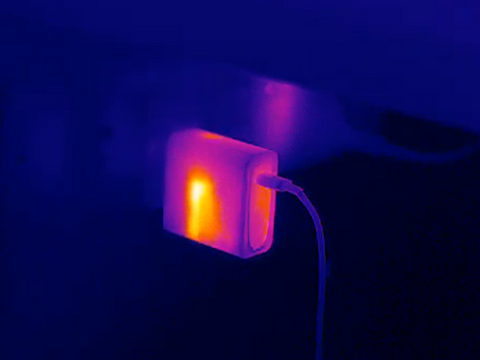Thermal Cameras in Electrical Maintenance: Enhancing Safety and Efficiency
Thermal cameras have the remarkable ability to detect hidden heat signals inside electric systems. Conventional vision tests usually fail to identify possible problems because they can't be seen with the naked eye. But through the use of thermographic techniques, the cameras can spot unusual and unusual changes in temperature, providing a unique angle to reveal otherwise hidden problems.
Thermal Cameras Can Enhance Electrical Safety
The main advantage of a thermal camera in an electric system is its increased security. Through the detection of unusual thermal patterns, the cameras can assist in the detection of electric failures, overheating, and other possible dangers. This enables early action and prevention to reduce the danger of a fire, an injury, or an electric breakdown.
Thermal cameras can be used as an active tool for forecasting repair, allowing engineers to detect critical issues before they become severe issues. An electrician can check for loose connections, overloads, and defective parts by measuring the temperature difference. Detecting such problems in time will not only help to avoid expensive failures but will also lower the chance of accidental or unscheduled downtime.

Application Scenarios and Who the Thermal Cameras Are
There is a wide range of applications for thermal cameras in electric systems. They can be employed in a wide range of scenarios, including:
Residential Buildings
Owners can use a thermal camera to check for excessive heat in the power supply, defective wiring, and other possible dangers. That gives them the power to adopt precautionary measures and keep their homes safe.
Business & Industrial Facilities
Thermal cameras provide a valuable tool for plant management and maintenance teams from the plant to the data center. Their ability to detect and correct electric problems is rapid, including overcharging, defective devices, and defective connections.

Energy Audits
Thermal cameras allow the energy inspector to detect the power dissipation and efficiency of the electric system. They can suggest energy-saving solutions by identifying regions where there is excess heat, thereby optimizing the whole system's performance.
Electrical Inspections
The Electrician and Electric Contractor may use a thermal camera to detect possible failures, loose joints, or other anomalies in a regular check. This allows them to give a more complete and precise evaluation of the state of the electric system.

Relevance and Benefits of Thermal Cameras
It is not possible to exaggerate the importance of thermal cameras in the field of electrical systems. By providing an enhanced perception of heat patterns, these devices empower individuals and professionals to identify and resolve electrical issues promptly. The benefits of using thermal cameras include:
Enhanced Safety
Through the detection of possible dangers and abnormalities, thermal cameras help ensure the general security of the electric system and minimize the risk of a fire or an incident.
Preventive Maintenance
Through proactive identification of problems, the thermal camera allows for early intervention, reduction of downtime, and prevention of expensive failures.

Energy Efficiency
Thermal Cameras contribute to the optimization of energy use by recognizing the energy lost and inefficient use, resulting in potentially cost-effective reductions in the environment.
Accurate Assessments
Thermographic imaging offers a more complete picture of the electric system, enabling precise evaluations and targeted interventions.
Thermal cameras have revolutionized how we perceive and deal with electric systems. Utilizing the power of thermography technology, such devices can improve electric security, provide predictive repair, and provide a whole new perspective on energy efficiency. Why didn't you choose an Xinfrared thermal camera?




